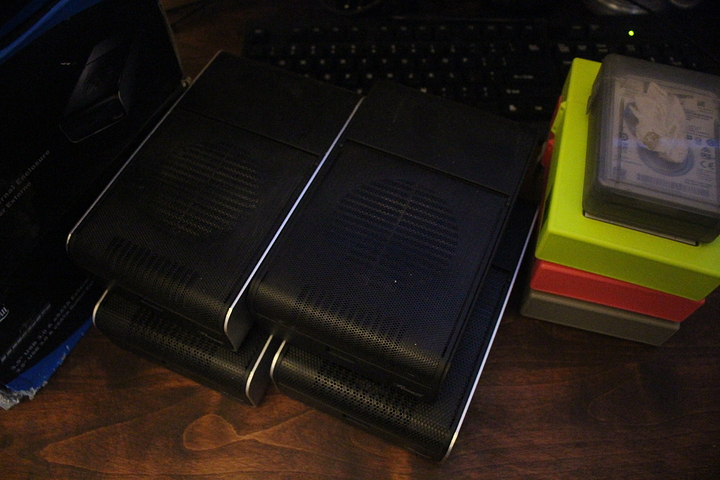Some notes if you’re going to do this:
LTO capacities are often stated as compressed capacities. The actual capacity is half, or less, sometime they specify with like 2.3x or 2.5x capacity. Look at the uncompressed capacity and know your dataset.
LTO is misleadingly-expensive until you are working with A LOT of tapes. Used drives aren’t that expensive, and cleaning tapes help prolong the life of the drive.
As @GigaBusterEXE said, tapes are not meant for a lot of re-writes. Because of that a lot of thought should be given to backup strategy. Full backup quarterly, and differential backups…weekly? two weeks? monthly? What makes sense for your dataset.
I worked with a large bank and tapes were archived “forever” once a quarter (pulled out of rotation) and we had monthly full backups with iirc weekly differential backups. The data sets didn’t change much, just more data was added.
Tapes do NOT have “good” wear leveling, so we were seeing tapes wear out after only ~20 cycles.
That’s another data point on “If you’re using tapes, you’re probably using hundreds of tapes”
Tapes by themselves are expensive. Crazy expensive. It’s cheap if yo have huge tapes but LTO4/5 is not super ideal. At $30-50 tape, plus the cost of the drive, that’s a lot of external hard drives you could buy instead.
Though you didn’t state it on your original post, I gather from the original yeeted posts you just don’t want to go with external hard drives. LTO capacity is way, way less than 18tb (unless you get into expensive-tapes territory) and losing 18tb at once is painful.
I can tell you that the shelf life of tape is indeed much more than HDD but I have a project with a very, very large collection of drives that have been used for archival purposes. Some of the drives in the collection are old. How old? When Miniscribe was a brand old. The rate of “pull drive, spint it up, pull data. Oops it’s dead?” is about the same, or better than “Pull old tape, shove it in drive, read data back successfully. oops it’s shreded the tape?” In practice what is hard on mechanical hard drives is just handling and moving them around. If they don’t move around much and are properly stored (mostly archival with seldom read) it’s fine.
So if you don’t mind spending a lot more for tapes, for not a lot of gain (again, unless you plan on having hundreds+ of tapes)
the tape connection doesn’t mater. Ideally, you would set it up in a networked machine and do everything over the network rather than direct attached. Linux is, by far, the best backup option for that.
As somone who has had to dig out ancient tape software to restore ancient backups (pre-symantec Arcserve which was the industry-leading software at the time), linux has never let me down in this respect. I’ll take a pic later if there’s enough interest. I have a DDS auto-loader that is SCSI-II and, to this day, is still works perfectly under Linux. It’s got to be nearly 30 years old at this point. Learning the ways of tar and scsi-generic on linux would be good advice.
ZFS, as a file system, dovetails nicely with “backup just what’s different from this point in time” (useful for either incremental or differential backups) because zfs automatically knows that because of the way it’s built and its transactional nature. Makes both backup and restore as fast as it possibly can be.
Backup speed to tape can otherwise be slow because it tries to organize the files into continuous pieces as it goes, which can cause an I/O storm.
Fiber Channel or SAS doesn’t matter much on Linux. FC you see more often with drives/enclosures that have auto loaders and more than one tape. At that point you’ve got a tape drive that can manage two or four simultaneous iops, which is an hilariously big deal.
Backup Strategy, Scripts and Software depend a lot on what is being backed up. No one sane is doing something like Full Backups, nightly, unless they have a tiny amount of data or need to be able to restore as quickly as possible but otherwise aren’t doing a high availability/replication solution for whatever reason.
LTO-5 Drive (go for new/sealed. Used ones are probably near EoL. We never surplus these because you never know when you’ll need a spare to read an old tape as… yes… backward compatible… but with LTO it’s usually iffy or n/a more than one or two generations back).
Assume $200. Tapes are $30 best case scenario.
1.5tb for $30.
Or:
2tb enterprise class SAS drives, ~$17.00 per drive. All you need is a SAS hotswap enclosure to read them, which is less than $200. You might have to jump through a hoop to format them from 520 bytes to 512 bytes but… Linux don’t care.
You can get cheaper 2tb SATA disks for $10-20 drive, too, and use a suuuuuper cheap USB to Sata docky thing.
Those sas disks also have built-in diagnostics to tell you exactly how worn-out they are. It’s not great when you get drives with 10 years of power-on time, but a lot of the time these enterprise drives have less than 5 years of PoH and that’s basically brand new.
then it’s just a matter of storage of the medium. Put the drives in a sealed tub like the ziploc ones office supply places sell, with the recommended dessicant, and they’re good for ever, even in “garage” type environments with thermal cycling (because sealed, and dessicant)
At the high capacity * a lot of tapes end, it can make sense. Used ebay tapes are Bad News Bears because of the low # rewrites. Plus don’t run up the prices of that because archivists are buying those to look for good stuff from company-closed-forever liquidations to upload to the internet archive.


